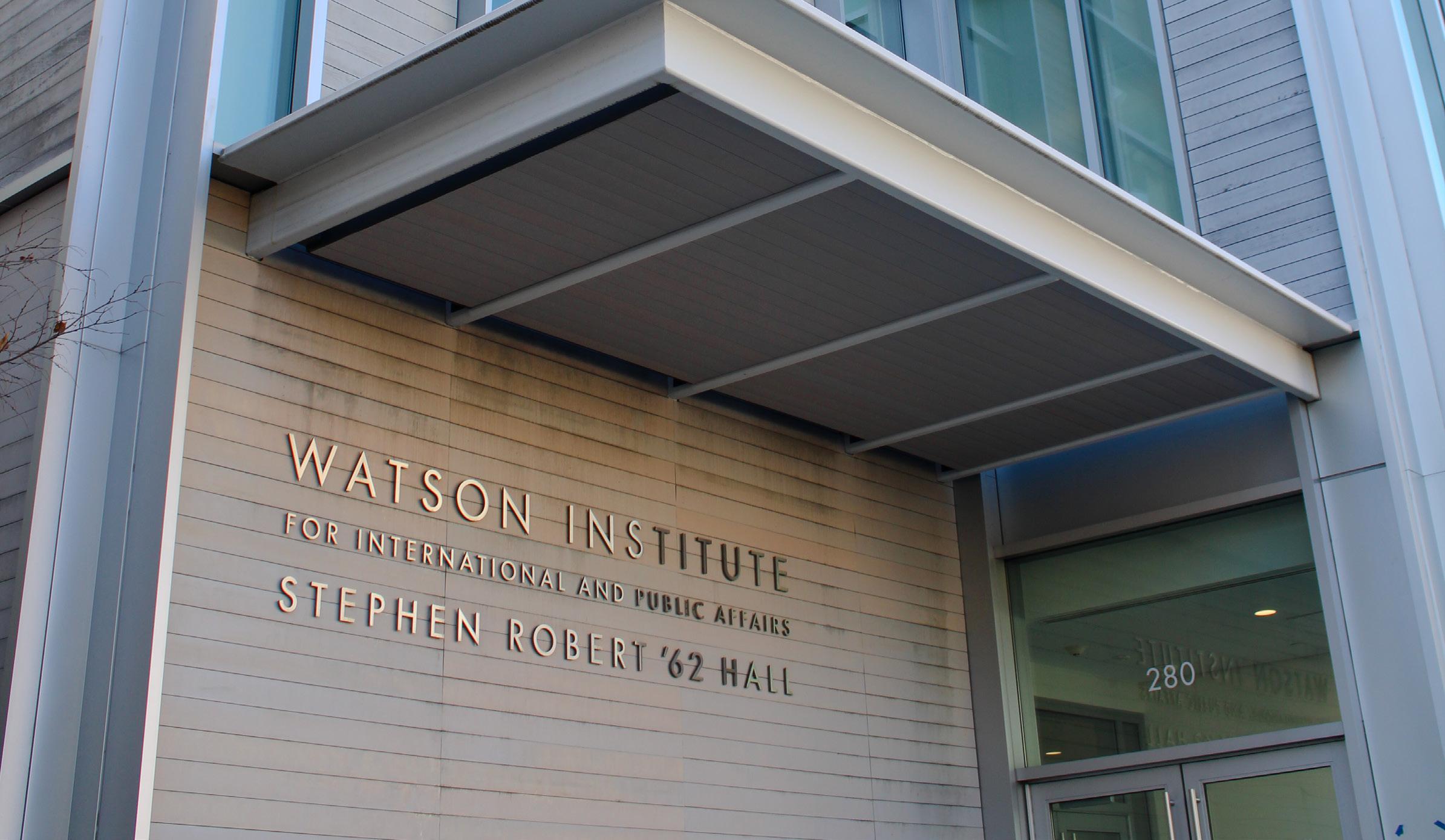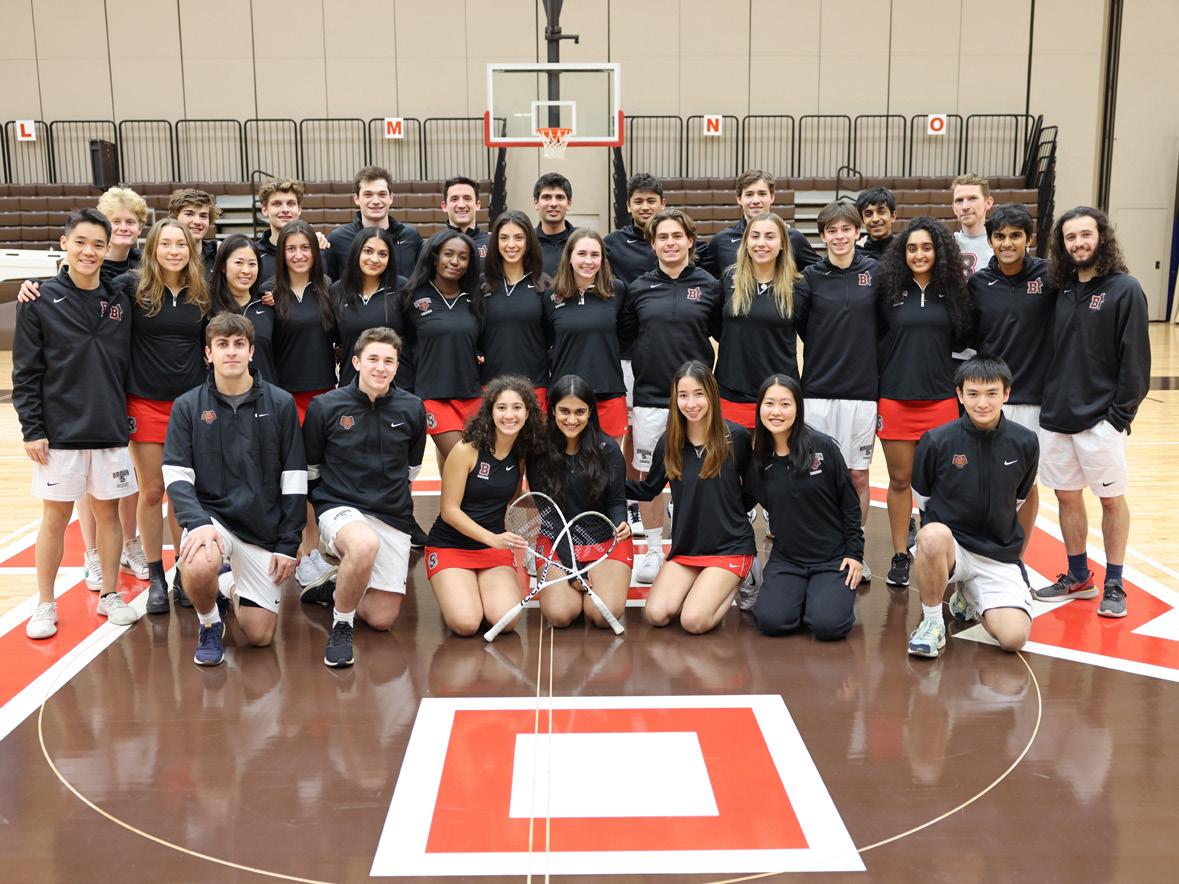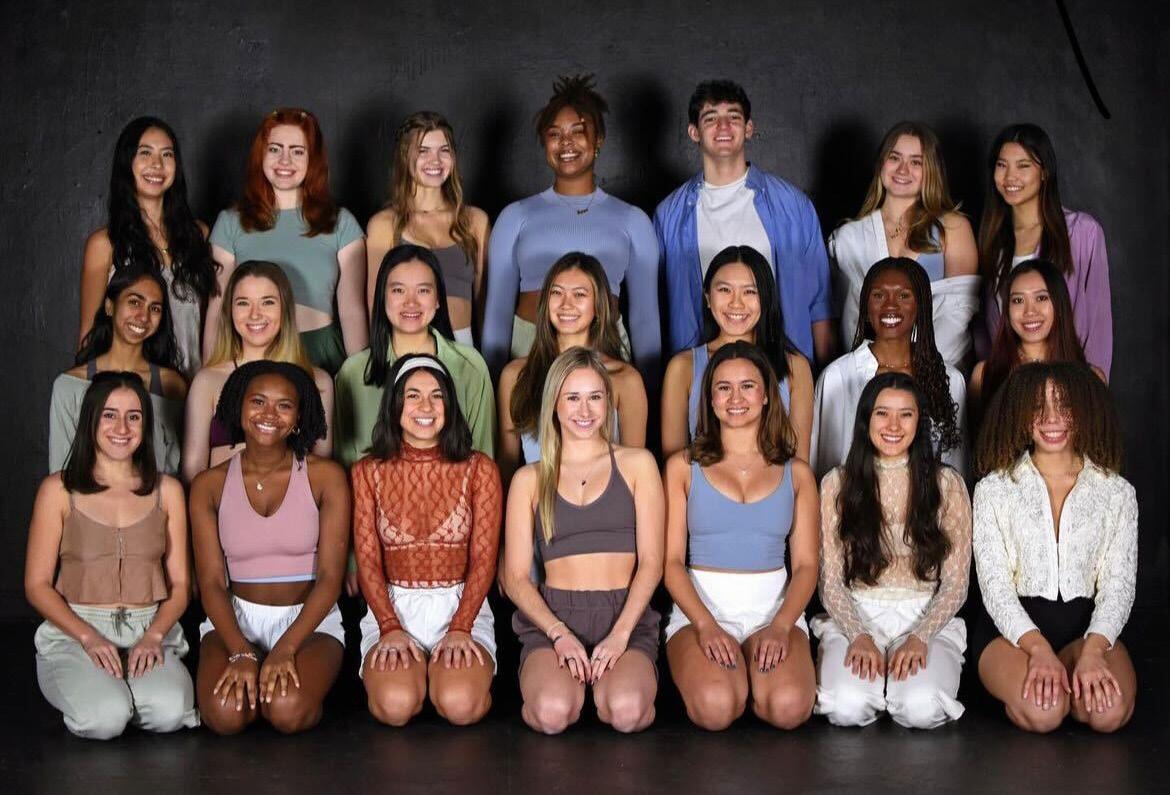
4 minute read
Artist-scholar, DJ madison moore performs at Brown Arts Institute event
Moore
BY RYAN SMITH SENIOR STAFF WRITER
Advertisement
The Brown Arts Institute and Department of Modern Culture and Media hosted TRAXXX, an event consisting of a performance by artist-scholar and DJ madison moore followed by a conversation with Professor of Modern Culture and Media Alexander Weheliye, at the Granoff Center for the Creative Arts Thursday.
moore, who is an assistant professor of critical studies at the Roski School of Art and Design at the University of Southern California, creates work that investigates “the aesthetic, sonic and spatial strategies queer and trans people of color use to both survive and thrive in the face of rolling catastrophe,” according to the event description. While piecing tracks together, moore asks themself, “Does this make me want to get up and dance?” they said at the event.
Audience members were invited to dance as moore performed for an hour. Their performance sequenced different tracks, pulling from popular music and incorporating voice recordings. Behind the turntable, footage of 1970s and 1980s clubgoers in Black, queer nightclubs mixed with vibrant techno visuals.
The event followed a discussion earlier in the day between moore and students in the graduate course “Frequencies of Black Life,” taught through the Brown Arts Institute for students at Brown and Princeton. The course is taught by Weheliye in conjunction with Tina Campt, professor of humanities at Princeton.
The course has three “thematic strands,” one of which is musical “frequency in relation to Black sound,” Weheliye said. “It made sense to invite” moore considering the thematic focus of the course and the importance of bridging “the divide between schol- arship and artistic practice” within modern culture and media and higher education overall.
“It was important for the students in the class to see someone who is a scholar but also a practitioner,” Weheliye said.
Audience member David Carre thought “the space felt very Black and queer” at the event.
They found it “interesting to think about the marriage of theory and praxis,” something moore also addressed in the conversation with Weheliye. Academia does not always embrace “fugitive practices, yet here we are thinking through what it means to keep techno Black and queer” from scholarly and artistic perspectives, they added.
During their performance, moore thought about Black and queer nightlife through track sequencing, they said in their conversation with Weheliye. When thinking about the disappearance of Black and queer nightlife, sound systems also function as a space of worldbuilding and togetherness, they explained.
“Club spaces have always been really important … in terms of how one perceives sound,” Weheliye said. Throughout “Black, queer (and) trans histories,” clubs have also functioned as “a safe space.”
There is a challenge in representing “subcultural spaces without spectacularizing or giving away too much,” moore said. Weheliye thinks that means “preserving those spaces while at the same time building on them” instead of just recreating them.
For Amon Pierson, a graduate student at Princeton, hearing moore discuss disappearing nightlife spaces and their “ephemeral nature” made him think about “the importance of having these spaces, but also the fact that they’re not supposed to last forever.” moore said they endeavor to represent the embodied experience of music and nightlife by incorporating interviews into their tracks. “The most beautiful thing is people sharing their club experiences,” they said. al development and coherent, quality curriculum.”
“That sense of embodiment that you get from inhabiting the club space is really special, and I think that’s something that we should cherish more,” Pierson said.
Maribeth Calabro, president of the Providence Teachers Union, said she has not seen much improvement resulting from the state takeover.
“Under the takeover, there have been so many missteps and miscommunications,” Calabro added. “There’s been very little progress in what was promised from the commissioner. I think the sooner we get a plan together to return to local control, the better off we’re all going to be.”
According to Morente, the state’s Turnaround Action Plan was “crafted with the community” and incorporated “reports on the intervention, including information on what PPSD has done to engage and improve communication with the community.”
Community engagement
As the city and state look toward the future of PPSD, “it is critical that we align our priorities with what our students and families need,” Smiley wrote in an email to The Herald. In January, the Smiley administration hosted an education workshop to better understand educational priorities among teachers, parents, students and alumni.
“I truly appreciated the fact that one of the first things, if not the first thing, that Mayor Smiley did immediately following his inauguration was to bring together the community,” Calabro said of the event.
At the end of the event, the information that was gathered from each of the workshops was put into a document and sent out to participants. “Not only did they listen, but they took our information and codified it,” she added.
“Centering the voices of Providence families is critical to building a better school system and we will continue to make this process as inclusive as possible,” Smiley wrote. “I am meeting with stakeholders from every part of the education system to build those relationships and engage them in the path forward.”
Teacher shortage, curriculum development

A summer 2022 update on the Turnaround Action Plan stated that there were 213 new PPSD hires as of May 2022. But according to Calabro, PPSD has already seen 98 teacher resignations in the 2022-23 academic year.
Calabro said that PPSD administration is top-heavy and the state must move away from filling the roles of upper-level district leaders to instead address the teacher shortage.
According to Morente, teacher shortages are not just limited to Providence. “There is a nationwide education workforce challenge.”
He referenced an American Federation of Teachers report which found that, even before the pandemic, “nearly 300,000 teachers were leaving the profession each year, and schools were also facing persistent shortages among the school support staff who play such a vital role in every child’s school day.”
Calabro also wants the district to address strategies for curriculum development for students and support the improvement of reading and math programs. Additionally, Calabro believes in improving financial literacy and ethnic studies offerings for students. “By offering a wide variety of choices for (students) to investigate, explore (and) discover, they can find what their calling is,” Calabro said.
“Per state law, financial literacy is a requirement,” Morente said, adding that RIDE’s Council on Elementary and Secondary Education recently approved new standards for social studies.
Smiley said he is also focused





